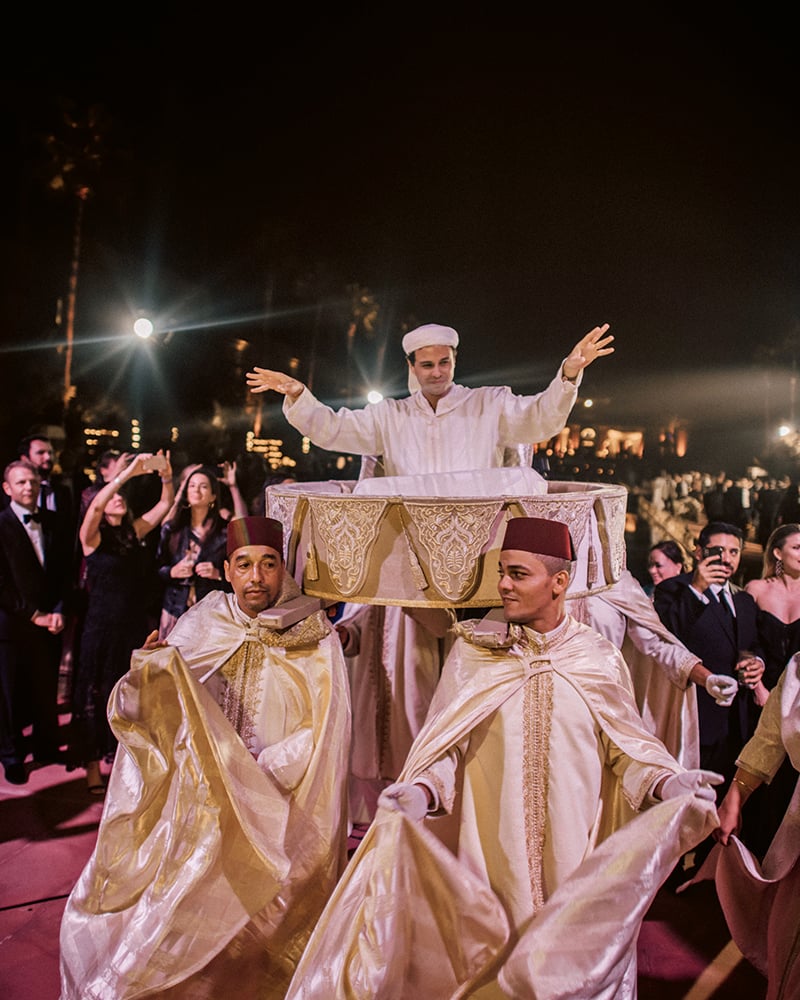Moroccan weddings are steeped in tradition and rituals. One of the most iconic aspects of a traditional Moroccan wedding is the beautiful, embroidered and embellished outfits worn by the bride and groom.
The distinctive designs vary from region to region but are always incredibly intricate and lavish. Another important element of Moroccan weddings is the food.

Guests are served Moroccan mint tea, cakes of all kinds, and dinner which often includes lamb or chicken. Serving food is seen as an important way to show hospitality and welcome guests.
Today, many couples choose to have a smaller, more intimate ceremony followed by a larger reception but the traditional seven-day celebration is still practiced by some families. No matter what form the wedding takes, it is always a momentous occasion that is cherished by all involved.
The bride and groom share a drink of milk and honey to represent the sweetness of their life together.
The bride and groom share a drink of milk and honey to represent the sweetness of their life together. In some cultures, it is believed that honey will bring sweetness and sustenance to the couple throughout their lives. The groom is given a sherbet or madhuperk made of clarified butter, curd, honey and some essence to drink. He sprinkles some in front of the bride as a symbol of sweetness for their life together.
The bride\'s mother washes her feet and those of the groom in a special ceremony called the
The bride\'s mother washes her feet and those of the groom in a special ceremony called the söz kesmek. This is a very important part of the wedding day, as it is seen as a way of blessing the couple and their marriage. It is also a very special moment for the mother-in-law, as she gets to show her love and support for her new son-in-law.
A group of musicians called
A group of musicians called "dakakiya" play different music styles from different regions of Morocco. These traditional bands play music that is influenced by Arab, Berber, Andalusi, and other musical styles.
The bride is carried around on a large chair called the 'Amariya' as people get to see her and wish the couple good luck. The couple then goes to the husband's family home where they take Lahdiya (clothes, flowers, perfumes, slippers, pumps, dates, etc.) to the bride along with a traditional musical instrument called the lute.
The bride and groom exchange coins as a symbol of their future prosperity.
In many cultures around the world, the exchange of coins is seen as a symbol of future prosperity for the newly married couple. In England, for instance, it is traditional for the groom to present his bride with a silver coin as a symbol of his willingness to provide for her.
In Poland, coins are even incorporated into the wedding ceremony itself, with guests showering the newlyweds with coins instead of confetti. This old tradition is thought to have its origins in both Roman and Brehon law, and it serves as a reminder of the groom's pledge to care for his new wife. In Hispanic cultures, thirteen gold coins are given to the bride during the wedding ceremony as a symbol of her husband's promise to provide for her.
This not only represents the financial prosperity that the couple will enjoy in their marriage, but also serves as a reminder of the groom's commitment to protect and care for his wife. No matter what culture you come from, exchanging coins during your wedding ceremony is a beautiful
Comments
Post a Comment